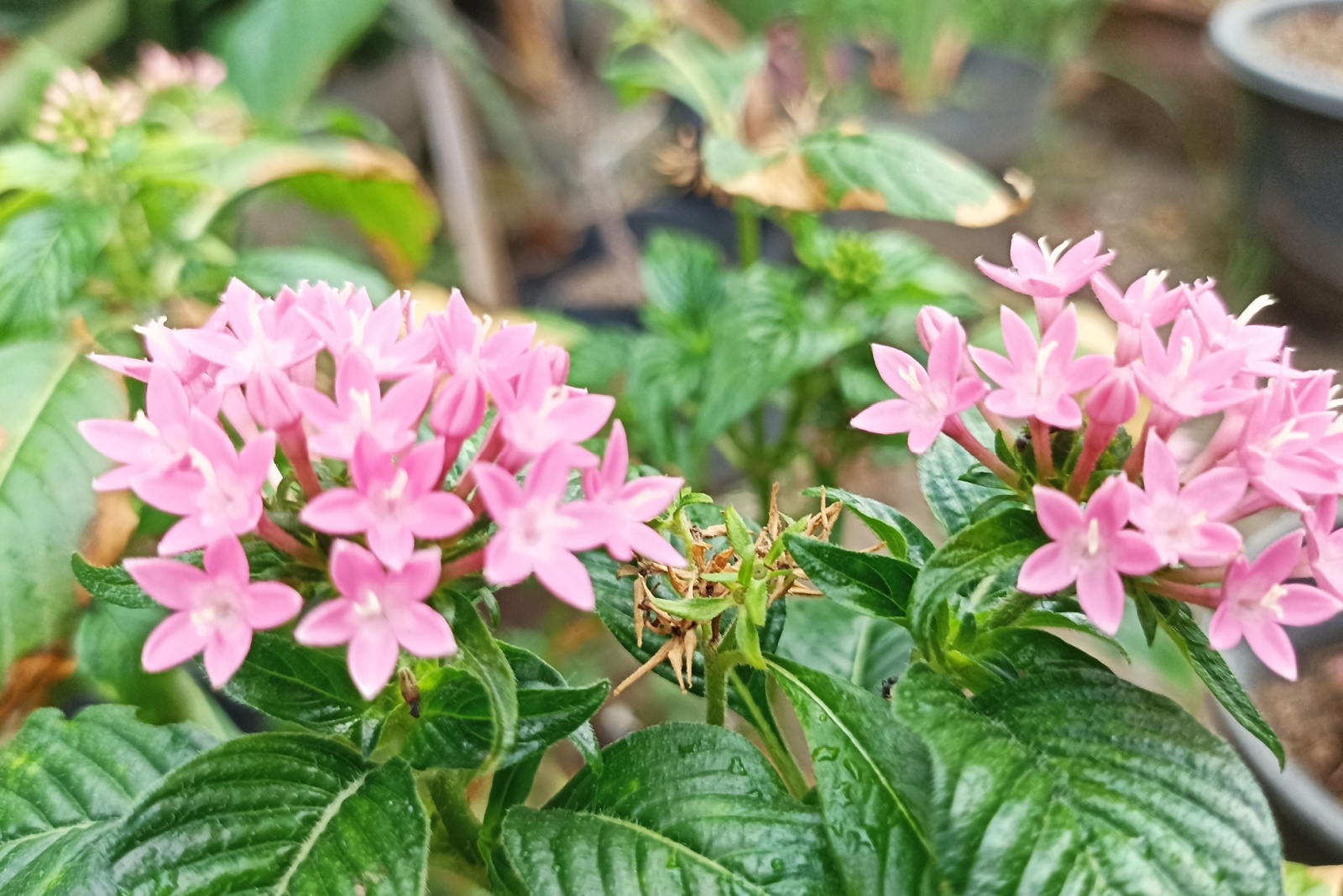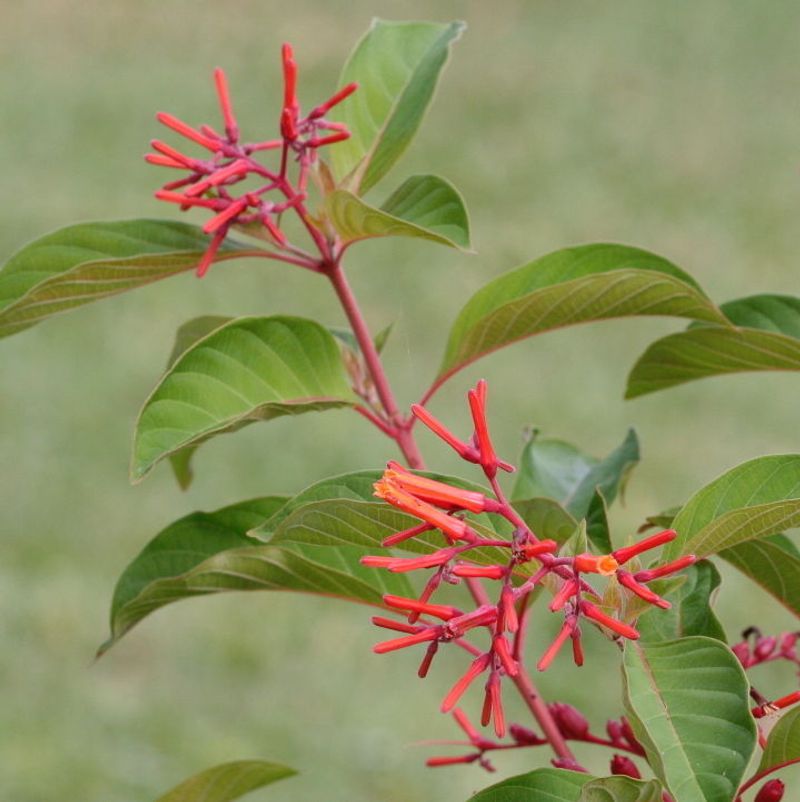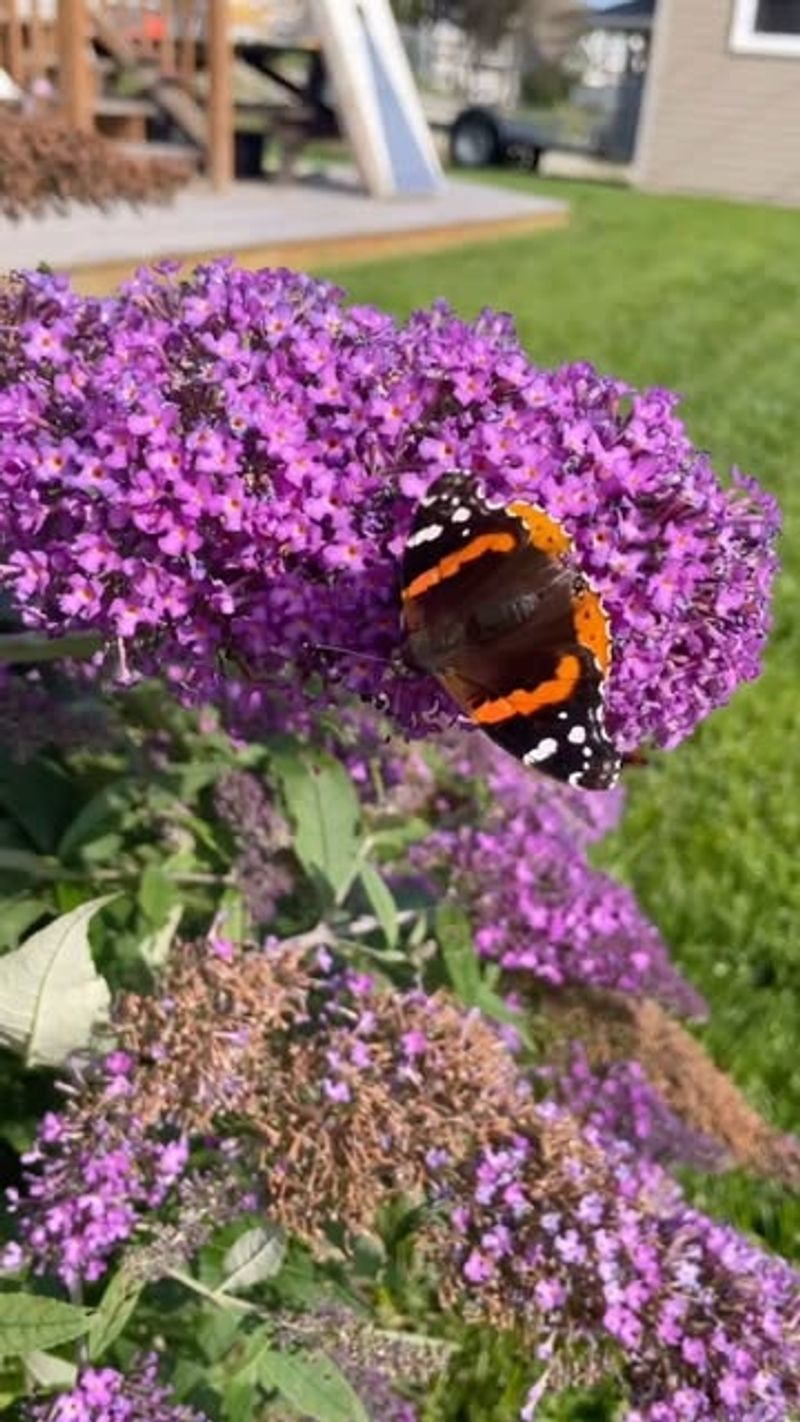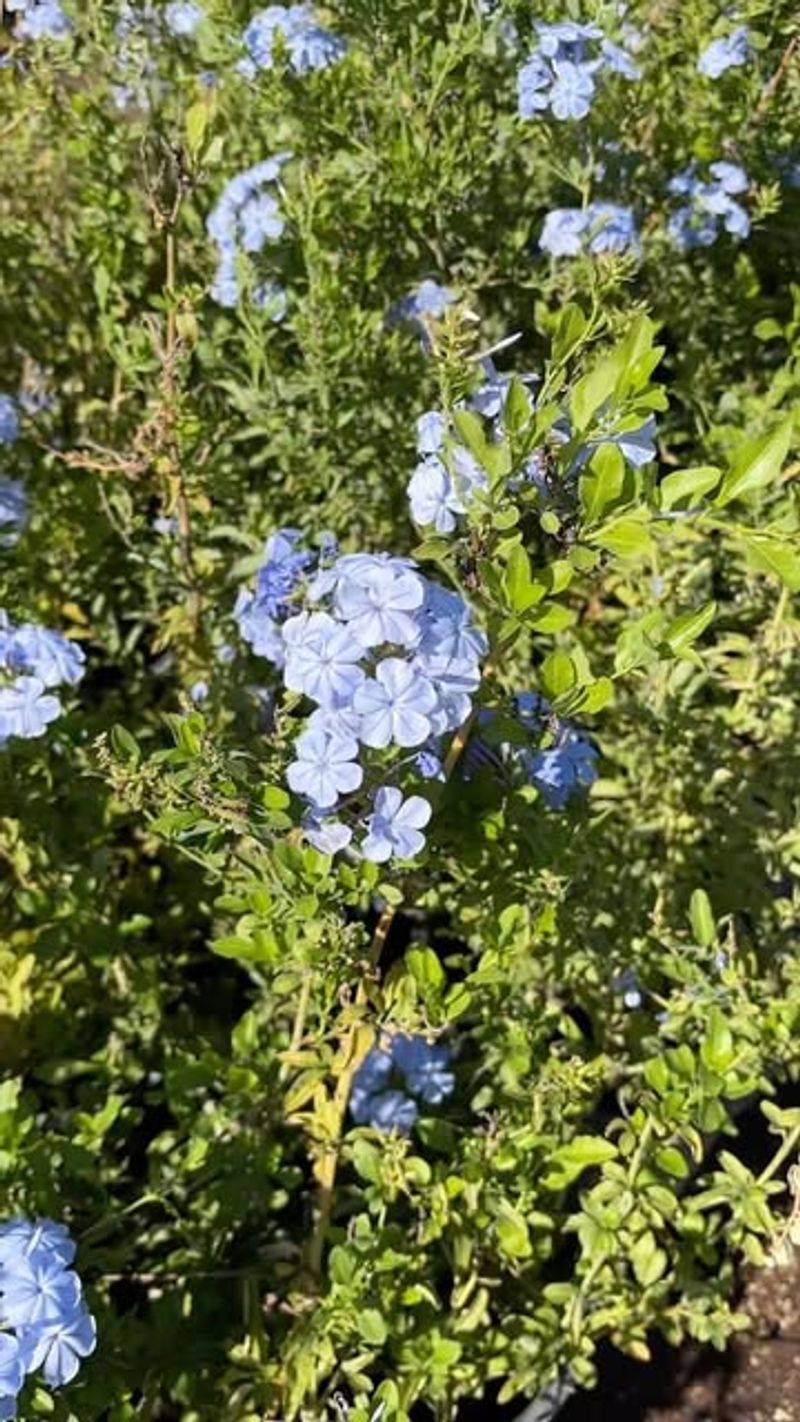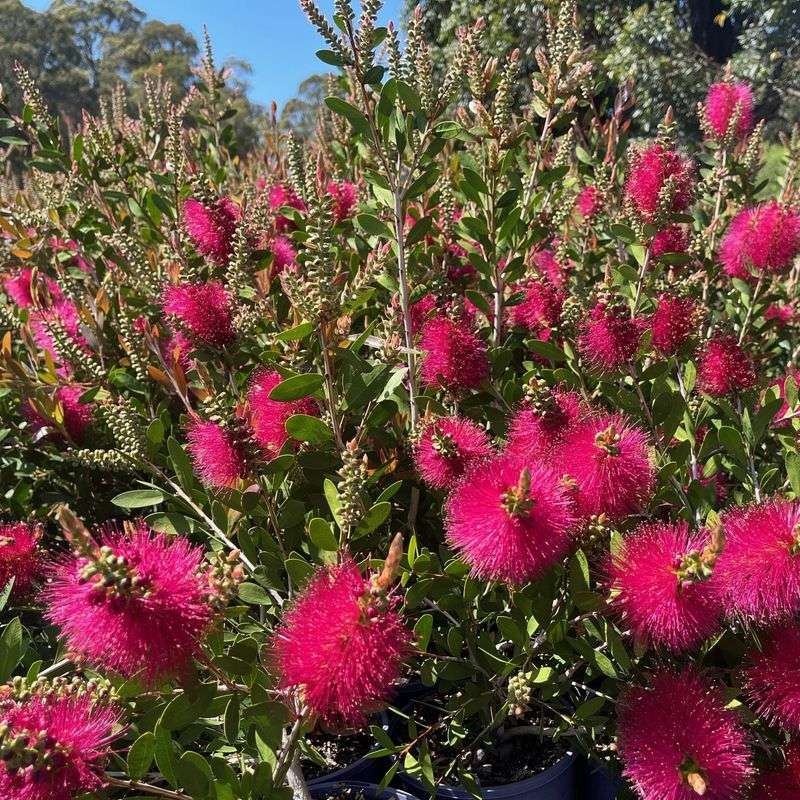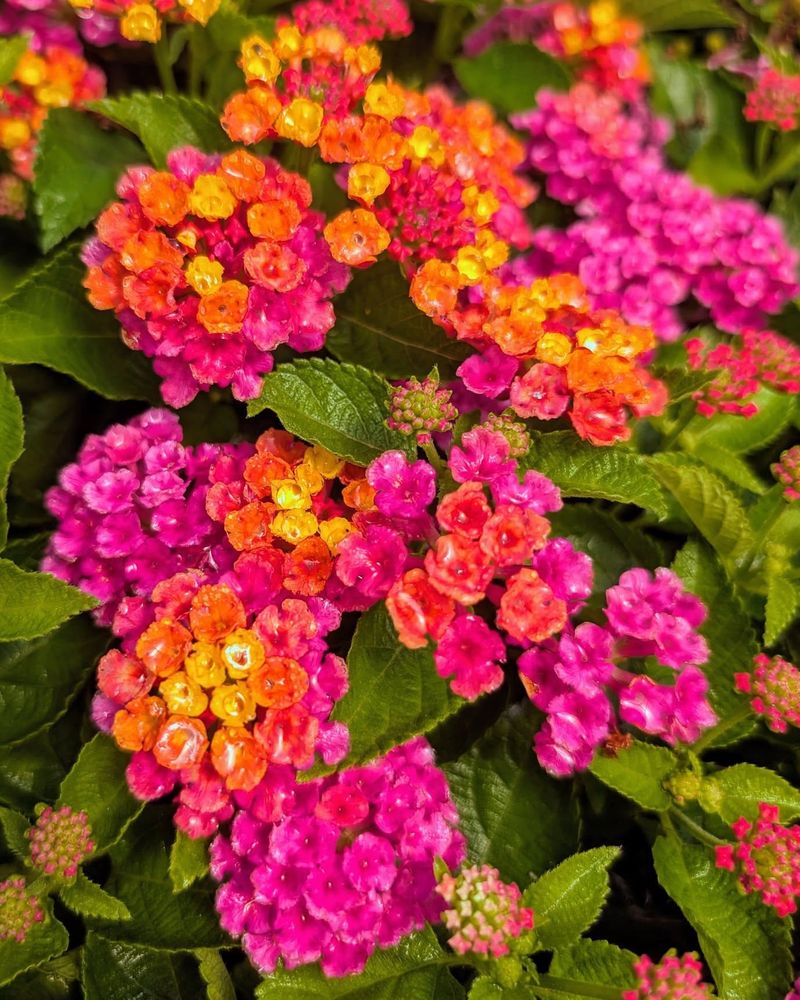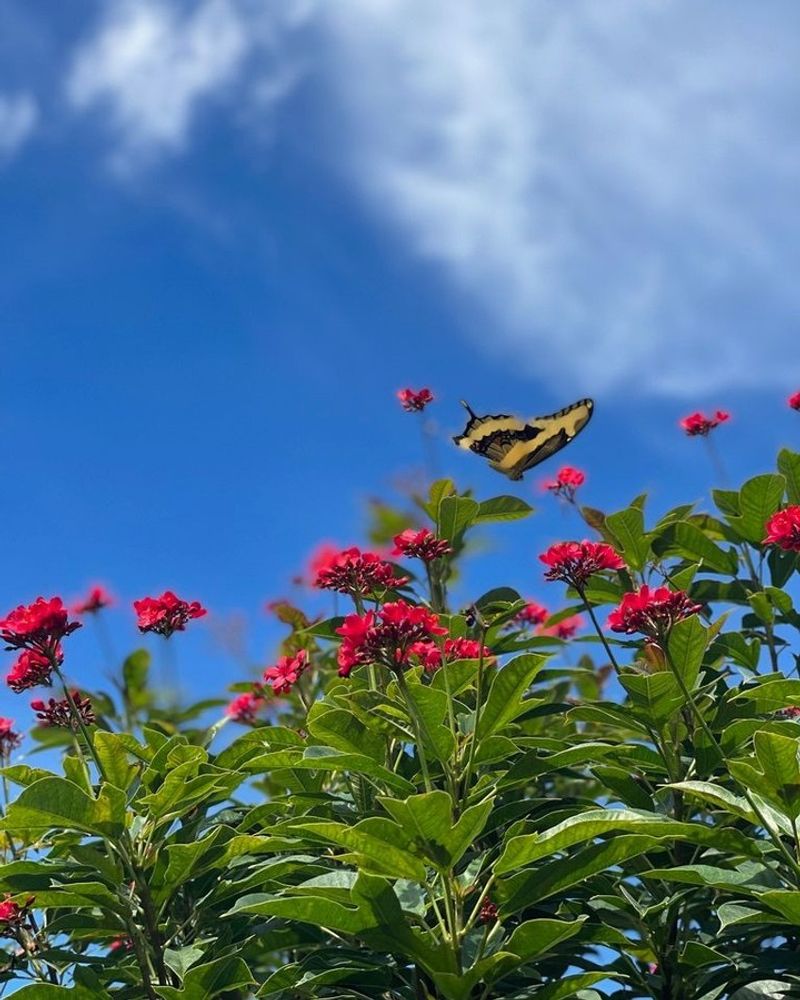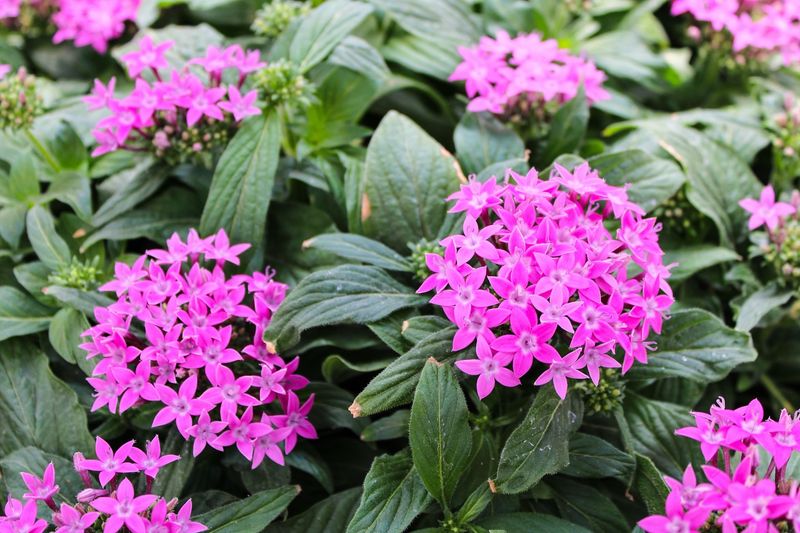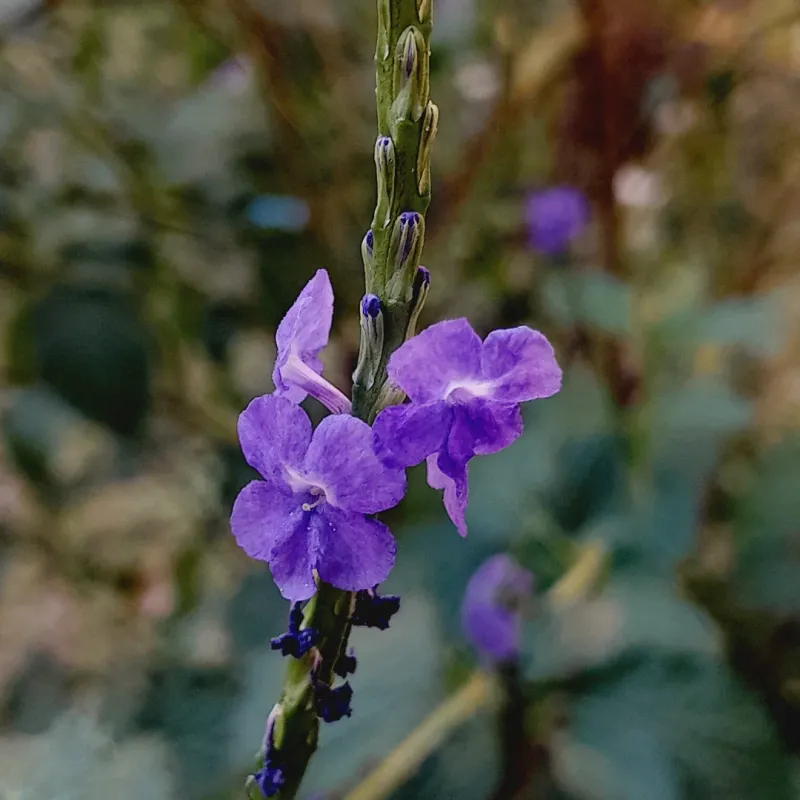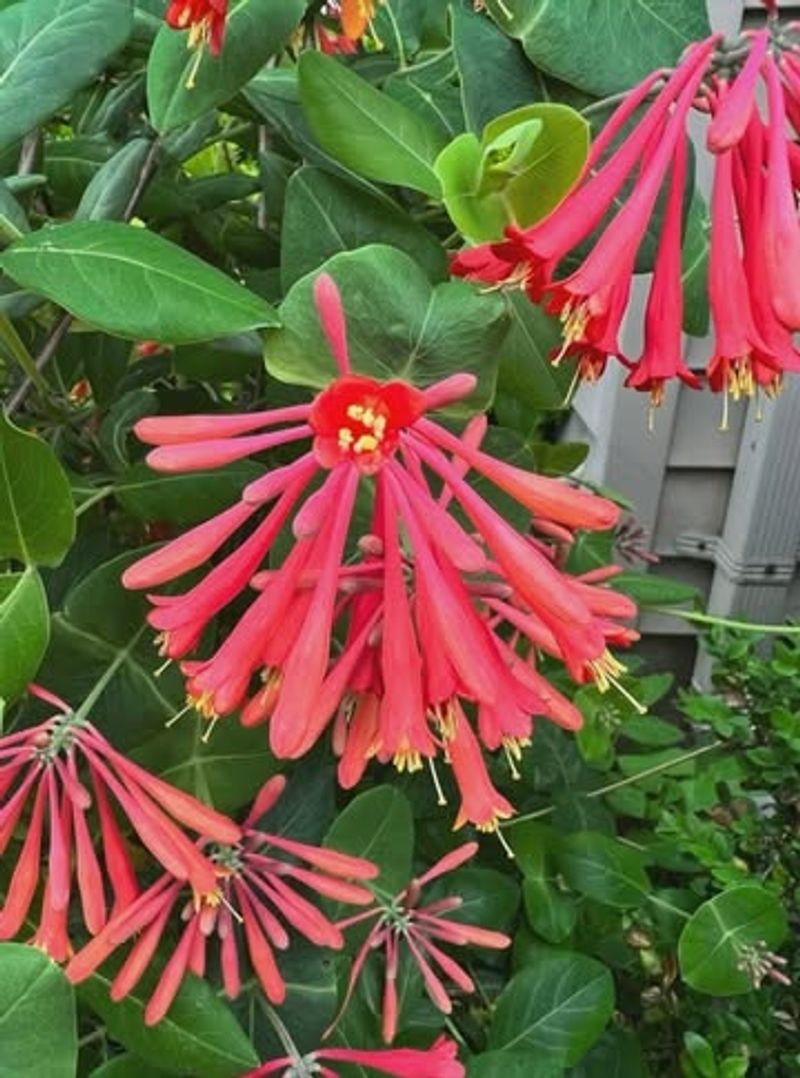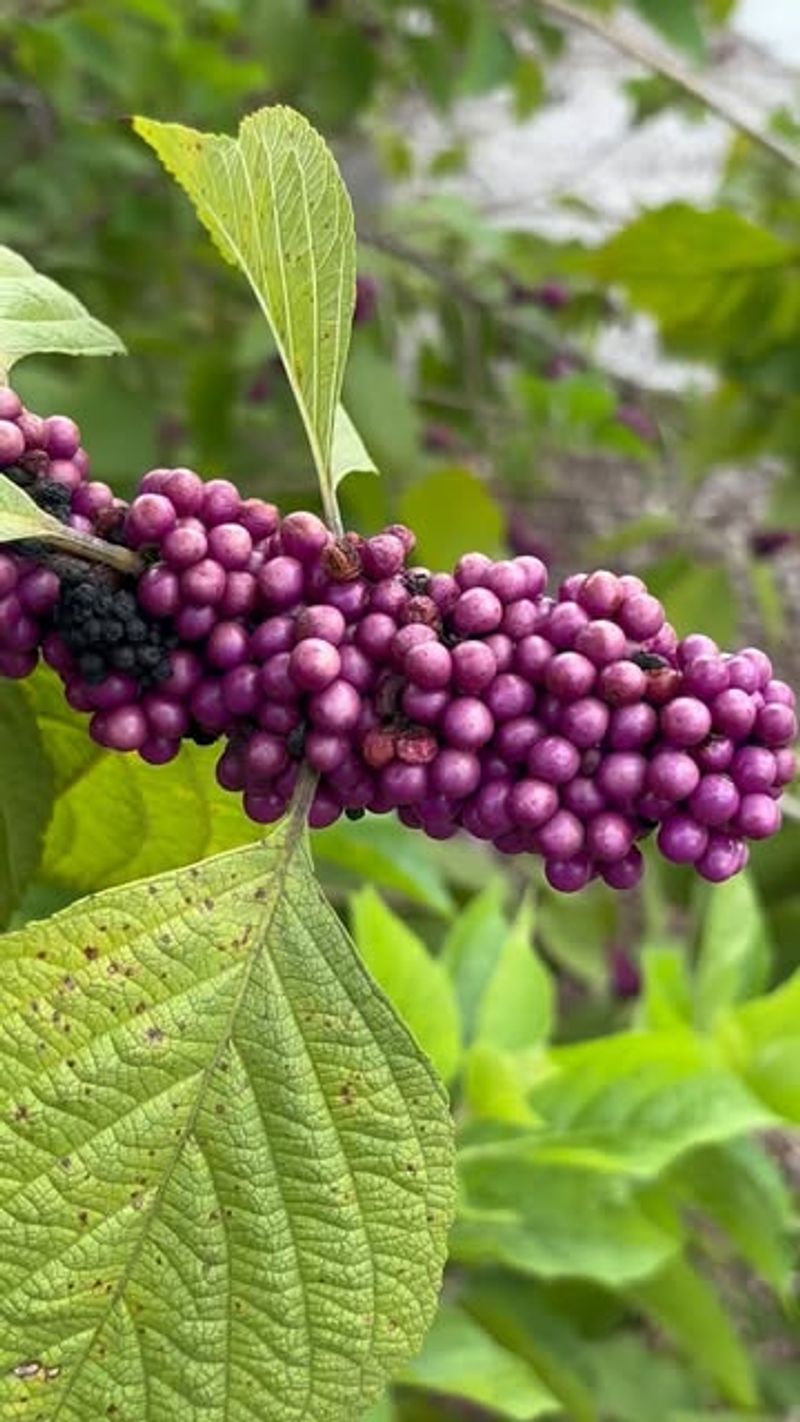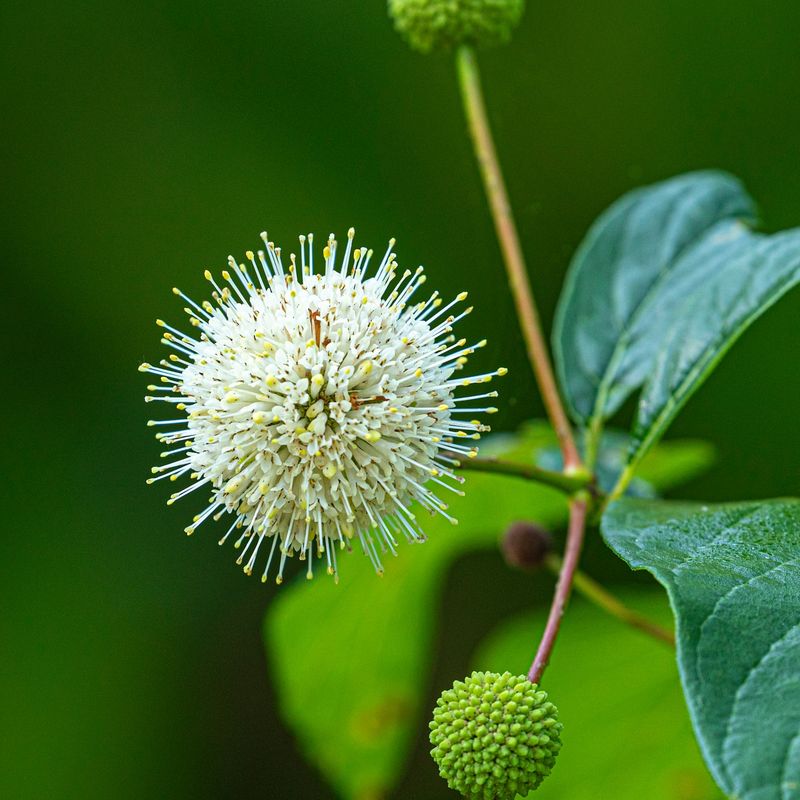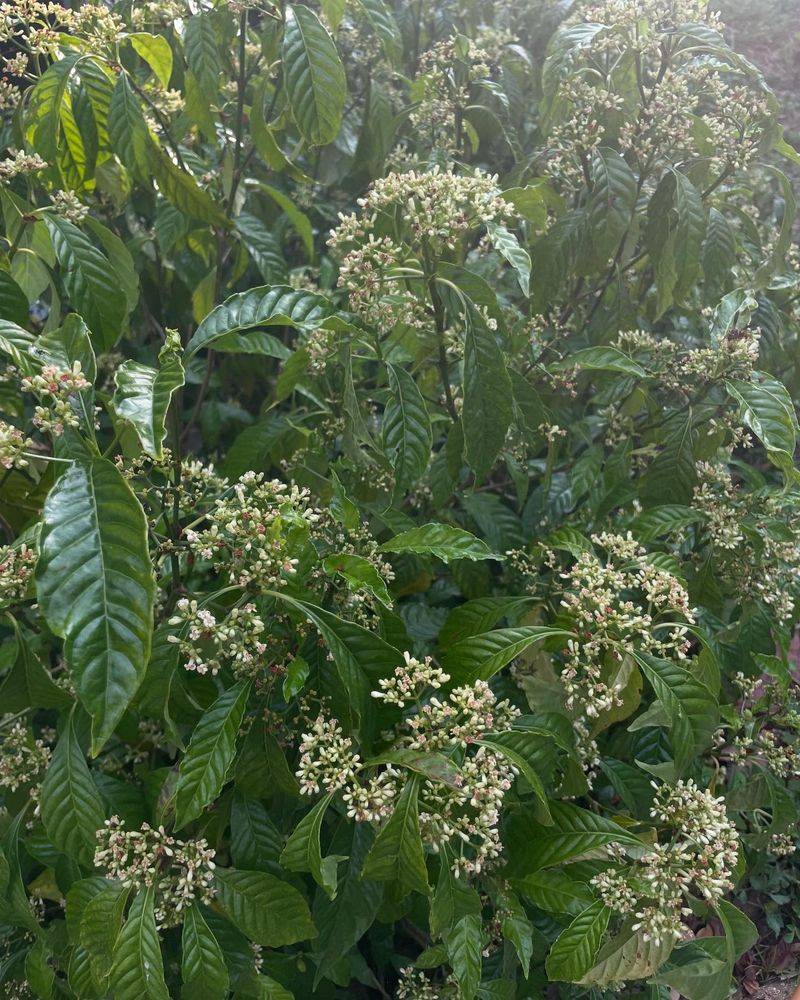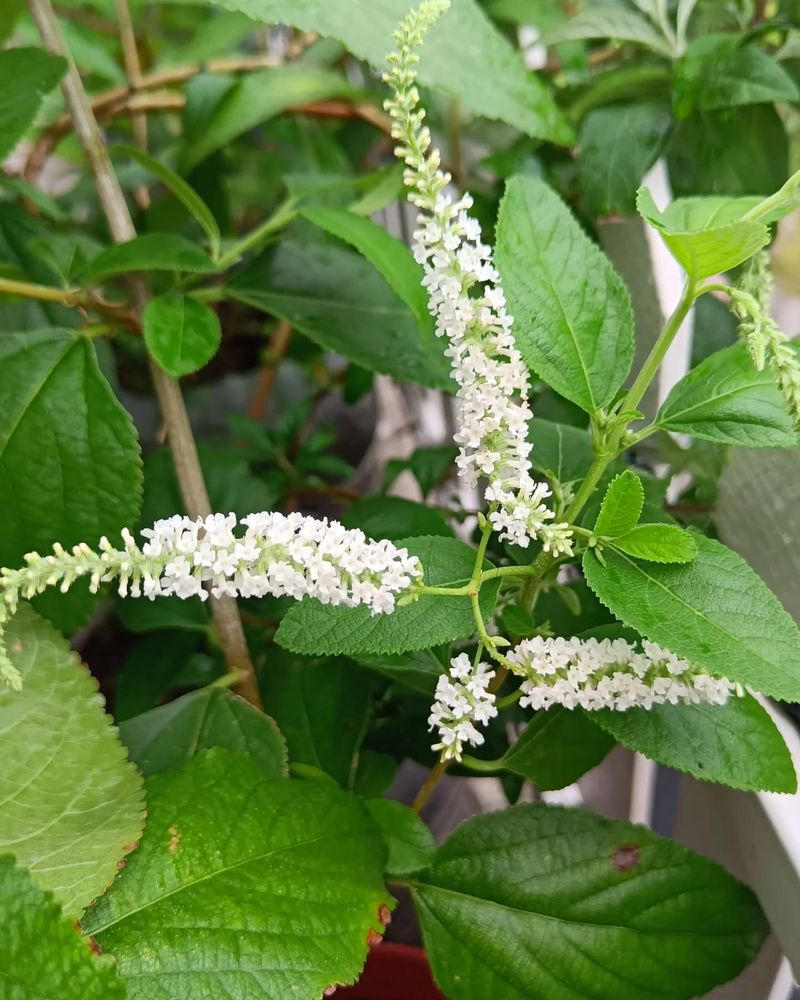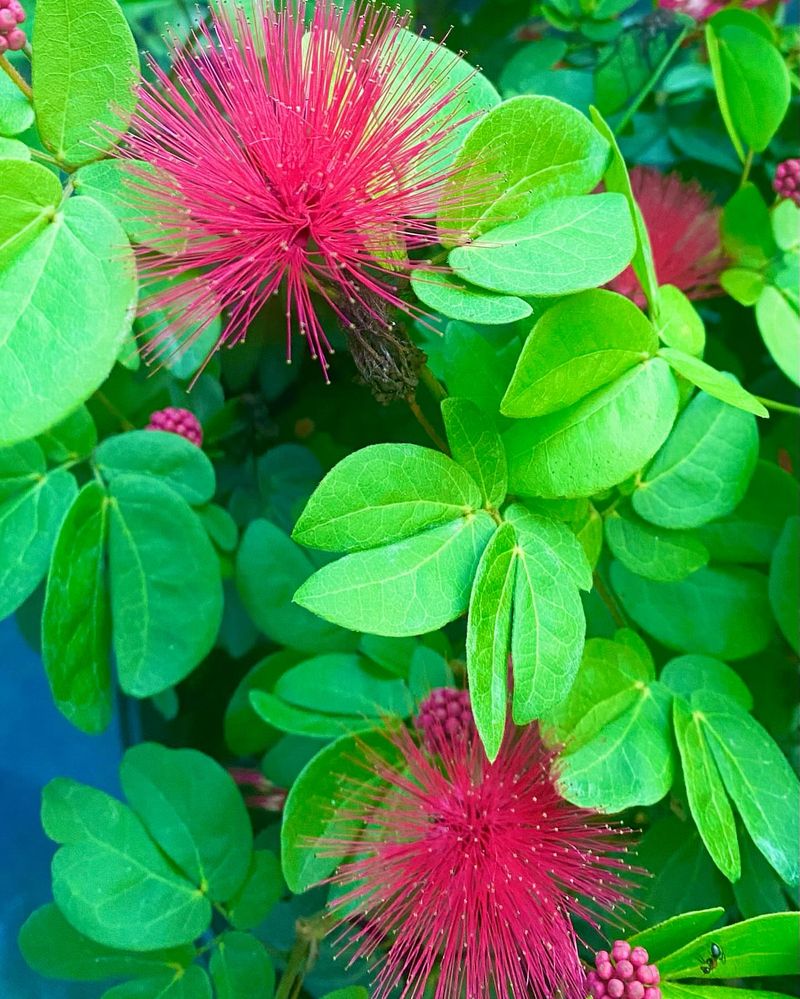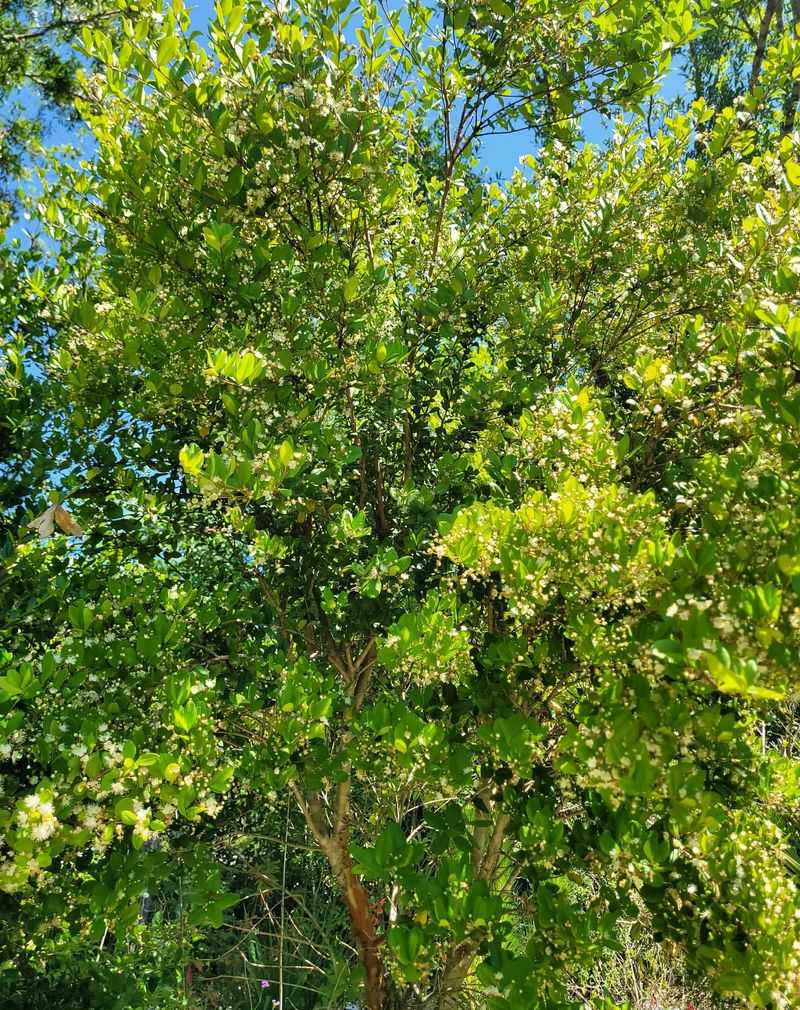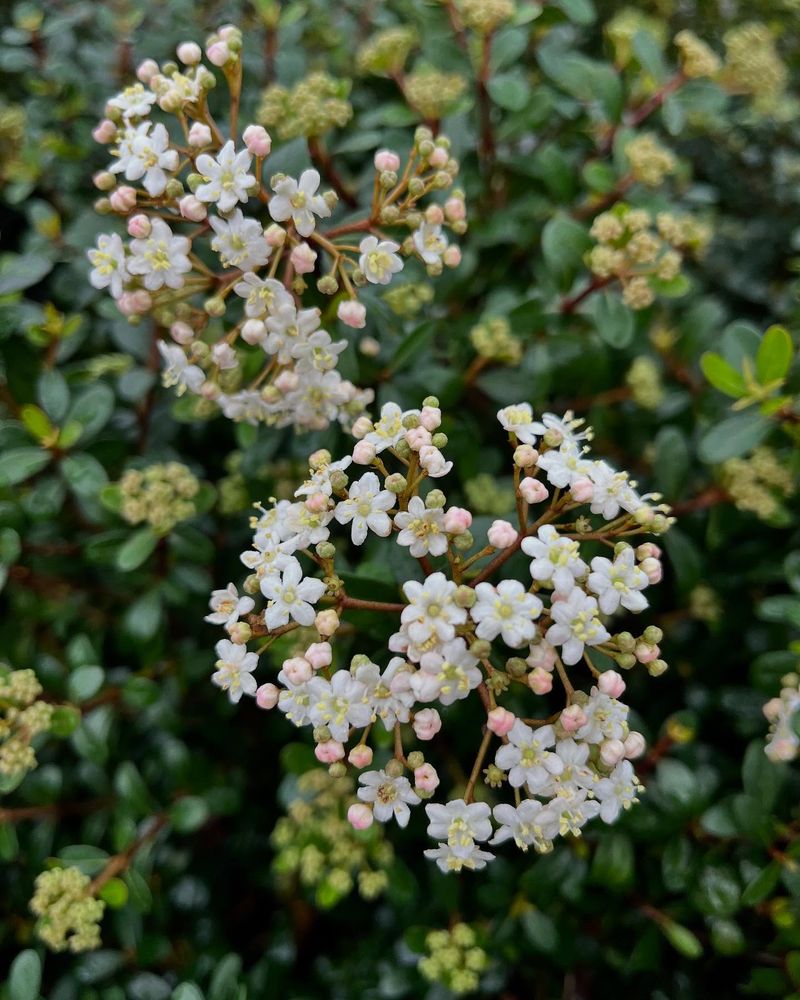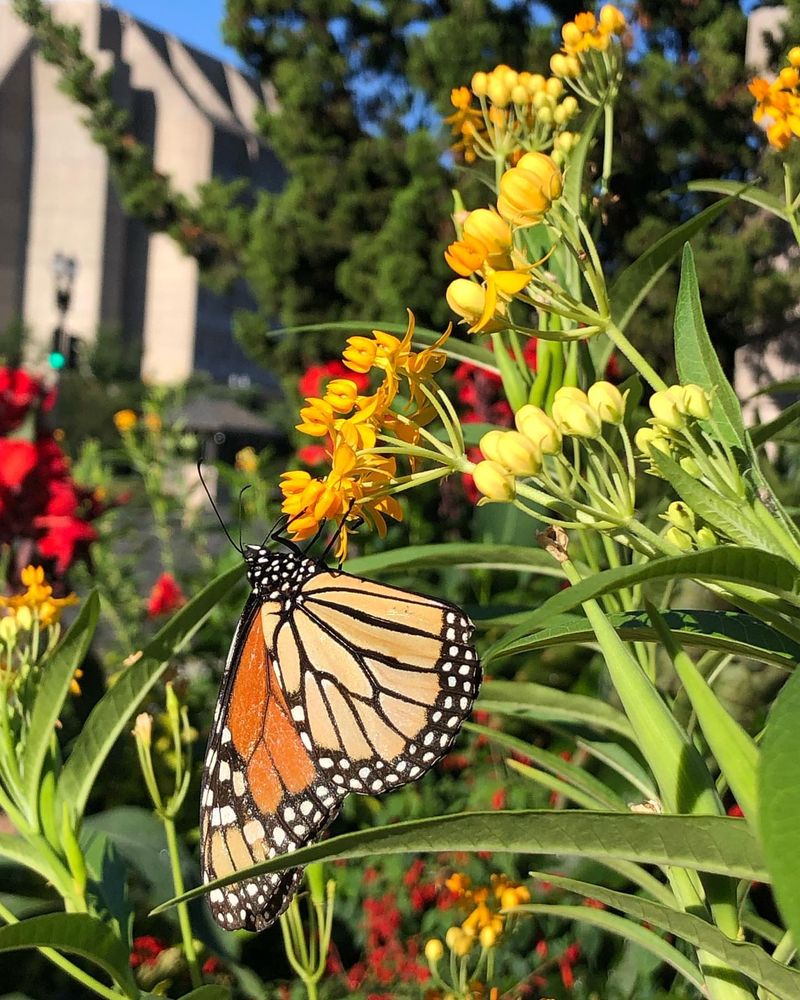Florida gardens can become magical butterfly havens with the right flowering bushes. Butterflies need nectar-rich plants to feed on and specific host plants to lay their eggs. Creating a butterfly-friendly garden helps support these beautiful pollinators while adding vibrant colors to your landscape.
By planting these butterfly-magnet bushes, you’ll transform your outdoor space into a fluttering paradise.
1. Firebush (Hamelia patens)
Fiery orange-red tubular blooms make this Florida native a butterfly magnet throughout warm months. Hummingbirds love it too!
Firebush grows quickly to 8-12 feet tall in sunny spots, though it can handle partial shade. The nectar-filled flowers appear from spring through fall, making it a reliable food source when other plants stop blooming.
Remarkably drought-tolerant once established, firebush needs minimal care while delivering maximum butterfly attraction.
2. Butterfly Bush (Buddleja davidii)
Long, cone-shaped flower clusters in purple, pink, or white emit a honey-sweet fragrance irresistible to butterflies. The name doesn’t lie!
Growing 5-10 feet tall and wide, butterfly bushes produce blooms from summer through fall. Plant them in full sun for best flowering, and don’t worry about watering much once they’re established.
Regular deadheading encourages continuous blooming, giving butterflies a steady nectar source throughout the season.
3. Plumbago (Plumbago auriculata)
Sky-blue clusters of delicate flowers cover this sprawling bush nearly year-round in Florida. Cassius blue butterflies especially adore plumbago, using it as both nectar source and host plant.
Growing 3-10 feet tall and wide, plumbago works beautifully as a flowering hedge or container plant. The sticky flowers sometimes catch small insects, but butterflies navigate them easily.
Low maintenance and salt-tolerant, plumbago thrives in coastal Florida gardens with minimal attention.
4. Bottlebrush (Callistemon spp.)
Crimson brush-like blooms burst with nectar that attracts butterflies by the dozens. Native to Australia but perfectly adapted to Florida’s climate, bottlebrush creates quite a show!
Available in dwarf varieties (3-5 feet) or tree forms (15-25 feet), bottlebrush fits gardens of any size. The distinctive cylindrical flowers appear primarily in spring and summer, with lighter blooming throughout the year.
Drought-tolerant once established, bottlebrush needs full sun and good drainage to thrive.
5. Lantana (Lantana camara)
Multi-colored flower clusters change hues as they age, creating a kaleidoscope effect butterflies can’t resist. A single lantana bush might display yellow, orange, pink, and red blooms simultaneously!
Heat-loving and drought-resistant, lantana blooms non-stop from spring until winter frost. While some varieties spread aggressively, many compact cultivars stay manageable at 2-4 feet tall.
Lantana’s strong scent repels deer and rabbits while serving as a butterfly buffet and host plant for some species.
6. Jatropha (Jatropha integerrima)
Ruby-red star-shaped flowers bloom year-round, creating a constant butterfly feeding station. Sometimes called peregrina or fire-cracker, this Caribbean native dazzles in Florida landscapes.
Growing 5-15 feet tall with glossy leaves, jatropha maintains a naturally attractive shape without much pruning. The flowers appear in clusters at branch tips, making them easily accessible to butterflies.
Mildly cold-sensitive, jatropha performs best in central and south Florida where it rarely freezes.
7. Pentas (Pentas lanceolata)
Star-shaped flower clusters in red, pink, white, or purple bloom continuously in warm weather. Butterflies crowd around pentas so reliably that they’re sometimes called butterfly pentas!
Reaching 3-4 feet tall and wide, these bushy plants work well in borders or containers. The flat-topped flower clusters provide perfect landing pads for butterflies to rest while feeding.
Easy-care pentas prefer morning sun with afternoon shade in Florida’s hottest regions and consistent moisture without soggy soil.
8. Porter Weed (Stachytarpheta spp.)
Slender flower spikes in electric blue, purple, or pink create vertical interest while serving as butterfly magnets. Native species like blue porterweed support Florida’s butterfly population better than imported varieties.
Growing 2-4 feet tall and wide, porterweed blooms nearly year-round in frost-free areas. The tiny flowers open sequentially along the spike, providing nectar for weeks from a single stem.
Tough and drought-tolerant, porterweed thrives with minimal care in sunny spots with average soil.
9. Coral Honeysuckle (Lonicera sempervirens)
Trumpet-shaped coral-red blooms appear throughout spring and summer on this native vine-like shrub. Unlike invasive Japanese honeysuckle, this Florida native supports local ecosystems.
Growing 3-20 feet depending on support, coral honeysuckle can be trained as a bush or allowed to climb. The tubular flowers attract butterflies while the red berries feed birds, creating a wildlife-friendly package.
Plant in full sun to light shade in well-draining soil for best flowering and butterfly attraction.
10. Beautyberry (Callicarpa americana)
Delicate pink flowers in spring attract butterflies, then transform into spectacular purple berries by fall. This Florida native creates year-round interest while supporting wildlife.
Growing 3-8 feet tall and wide with an arching habit, beautyberry fits naturally into woodland garden edges. The inconspicuous flowers might not catch human eyes, but butterflies find them irresistible.
Extremely adaptable, beautyberry grows in sun or shade and tolerates poor soil, making it perfect for challenging garden spots.
11. Buttonbush (Cephalanthus occidentalis)
Spherical white flower balls resembling pincushions attract dozens of butterfly species with their abundant nectar. This Florida native loves wet areas where other butterfly plants might struggle.
Growing 5-12 feet tall, buttonbush works perfectly near ponds or in rain gardens. The unique round flowers bloom throughout summer, followed by interesting button-like seed heads that persist through winter.
Extremely wildlife-friendly, buttonbush supports over 24 butterfly species while tolerating occasional flooding that would kill other shrubs.
12. Wild Coffee (Psychotria nervosa)
Small white star-shaped flowers attract butterflies while the glossy ribbed leaves add year-round texture. Though called coffee, the red berries aren’t for human consumption but birds love them!
Growing 4-10 feet tall, wild coffee makes an excellent understory shrub in filtered light. Native to Florida hammocks, it thrives in the dappled shade beneath taller trees.
Remarkably low-maintenance, wild coffee needs minimal care once established while providing continuous butterfly habitat.
13. Sweet Almond Bush (Aloysia virgata)
Intensely fragrant white flower spikes emit a honey-vanilla scent that attracts butterflies from remarkable distances. The sweet perfume fills the garden, especially in early morning and evening.
Growing 8-10 feet tall and 4-6 feet wide, sweet almond bush blooms repeatedly from spring through fall. The slender flower spikes appear at branch tips, creating a fountain-like effect when in full bloom.
Fast-growing and drought-tolerant once established, this Argentine native adapts well to Florida’s climate.
14. Dwarf Powder Puff (Calliandra emarginata)
Feathery red powder-puff flowers bloom year-round in frost-free areas, creating a continuous butterfly buffet. The unusual blooms resemble miniature fireworks with their explosion of stamens.
Compact at just 3-5 feet tall and wide, this shrub fits perfectly in smaller gardens or containers. The fern-like foliage provides a delicate texture even when the plant isn’t flowering.
Heat-loving and moderately drought-tolerant, dwarf powder puff performs best in full sun with occasional deep watering.
15. Simpson’s Stopper (Myrcianthes fragrans)
Fluffy white flowers with a sweet fragrance attract butterflies in spring, followed by bright red berries that feed birds. This Florida native creates a wildlife haven in any garden.
Growing 6-20 feet tall, Simpson’s stopper can be maintained as a shrub or small tree. The aromatic leaves release a pleasant scent when crushed, adding sensory appeal beyond the visual.
Salt-tolerant and drought-resistant once established, this versatile plant thrives in sun or partial shade throughout Florida.
16. Walter’s Viburnum (Viburnum obovatum)
Clusters of tiny white flowers blanket this Florida native in late winter to early spring, providing crucial early-season nectar. Butterflies emerging from winter hibernation depend on these early bloomers.
Available in sizes from dwarf (2-3 feet) to standard (12-25 feet), Walter’s viburnum fits any garden space. The dense growth habit makes it excellent for privacy screens or hedges that double as butterfly habitat.
Remarkably adaptable, this viburnum tolerates wet or dry conditions and sun or shade throughout Florida.
17. Tropical Milkweed (Asclepias curassavica)
Orange and yellow flowers provide nectar while the leaves serve as essential food for monarch butterfly caterpillars. No butterfly garden is complete without at least one milkweed variety!
Growing 2-3 feet tall, tropical milkweed blooms nearly year-round in frost-free areas. The bright flowers attract adult butterflies while the foliage feeds their offspring, completing the life cycle.
Consider mixing this with native milkweed species for maximum butterfly support throughout the seasons.

